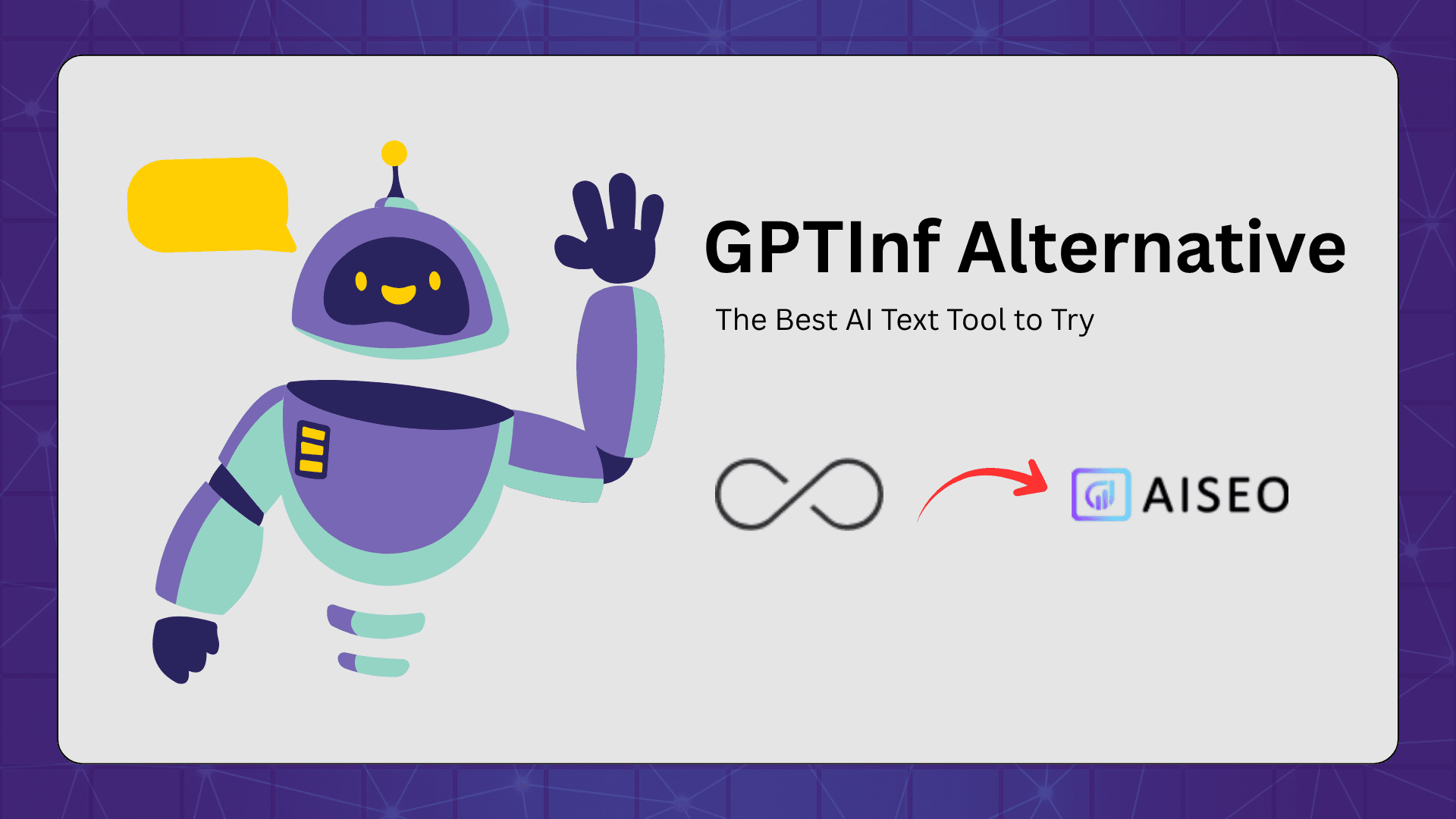If you’re searching for a GPTInf alternative because your AI text keeps getting flagged by tools like Copyleaks, you’re not the only one. AI writing has become the norm for essays, blogs, emails, and even client work — but detection has caught up. You paste your content into Copyleaks, the score lights up “AI-generated,” and suddenly that “time-saving” draft becomes a liability instead of an asset.
Here’s the core problem: detectors aren’t judging your ideas, they’re judging patterns. GPT-style text leaves behind very specific fingerprints — uniform pacing, overly neat structure, low emotional variation, and a rhythm that feels just a bit too balanced. GPTInf tried to solve this by masking those signals, but in 2025 you need something stronger, smarter, and more human.
That’s where modern gptinf alternative tools come in. New humanizers like Humanize AI Text, AISEO, and a few others don’t just swap synonyms; they rewrite your content with real human-like variation, emotion, and unpredictability while keeping your meaning intact. In this guide, we’ll walk through the best AI text tools to try, how they behave against Copyleaks, and which GPTInf alternative actually gives you human-sounding, detection-resistant content.
Top 5 GPTInf Alternatives to Bypass Copyleaks AI Detector
- Humanize AI Text — Most Accurate GPTInf Alternative for Humanizing AI Content
- AISEO Humanizer — Best All-Around Tool for Bypassing Copyleaks
- HIX Bypass — Real-Time Pattern Destroyer Designed for Detectors
- QuillBot — Classic Paraphrasing Layer for Structural Softening
- Ryne AI — Academic-Grade Humanization for Strict Evaluation
These tools don’t just paraphrase—they reshape the deeper structures Copyleaks analyzes.
Humanize AI Text — The Most Accurate & Reliable GPTInf Alternative
If you need the most precise and reliable gptinf alternative, Humanize AI Text is the clear leader. Instead of paraphrasing or swapping synonyms like older tools, it rewrites your content at the structural level — the very layer Copyleaks analyzes when determining whether something “looks AI.” This deeper transformation makes Humanize AI Text extremely effective for anyone who needs natural, detection-proof writing without losing clarity or meaning.

What Makes Humanize AI Text the Best GPTInf Alternative?
1. Deep Humanizer Modes Built for Natural Writing
Humanize AI Text offers several refined modes that reshape your content in different ways. Standard mode removes stiffness, Shorten cuts unnecessary filler, Expand adds nuance and depth, Simplify cleans up overly complex sentences, and Improve Writing elevates flow and tone. Instead of just “changing words,” it rebuilds the text so it feels organic and human-driven.

2. Readability Control, Purpose Selection & Brand Tone Matching
The tool lets you dial in how you want your writing to feel. You can adjust readability levels, choose a writing purpose (like storytelling, academic, or conversational), and even match specific brand personality traits. Freeze Keywords ensures your important terms stay untouched, which is especially helpful for SEO content, articles, and branded communication.

3. Human Score, AI Scan & Plagiarism Checks (All in One Place)
Humanize AI Text gives you visibility into how natural your writing sounds by showing a Human Score. You can also scan for originality and structural issues, letting you refine the text until it aligns perfectly with real human writing patterns. GPTInf doesn’t offer this depth of feedback — and that’s where Humanize AI Text shines.
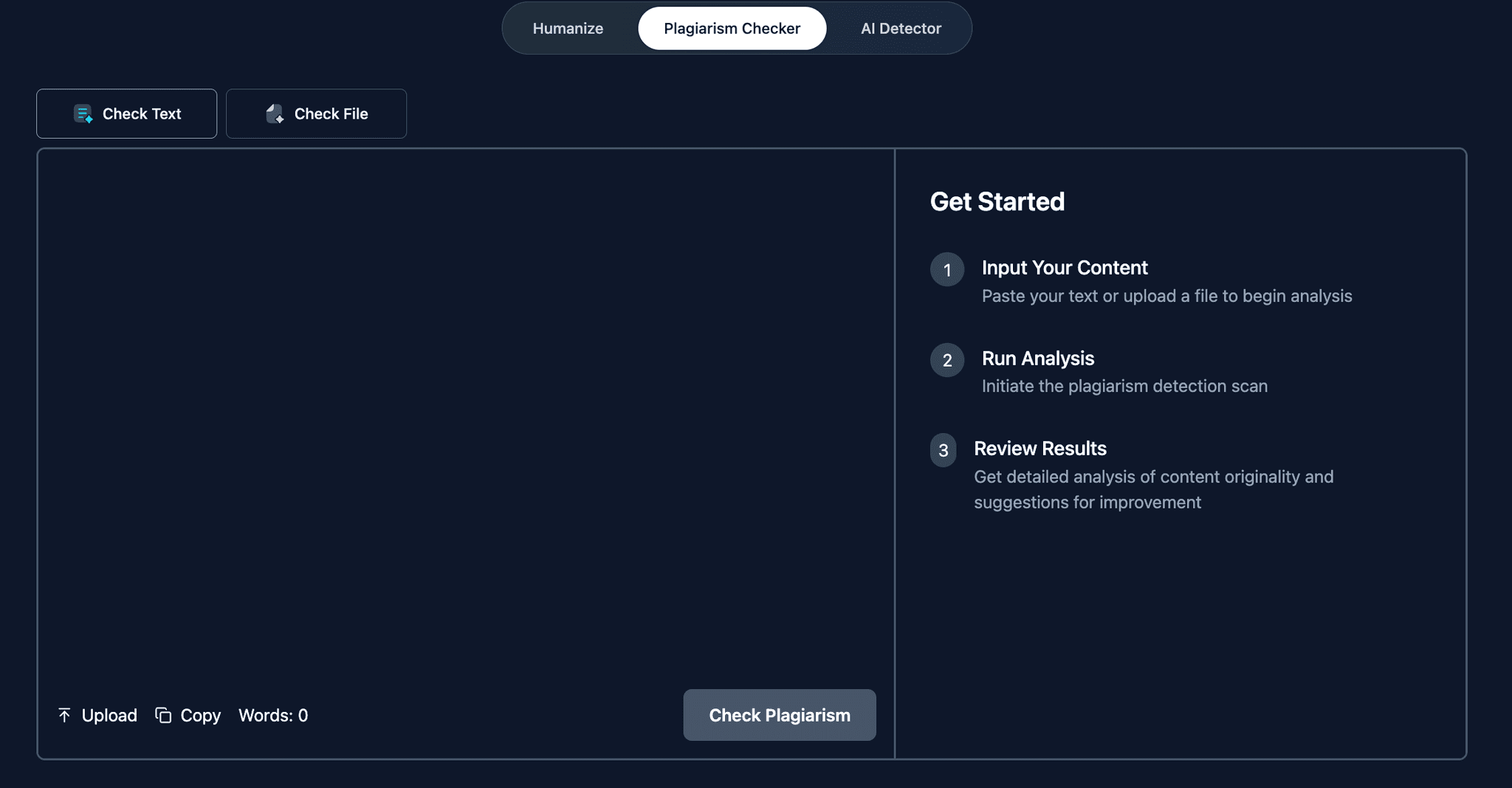
4. Full Document Uploads With Formatting Preserved
Whether it’s a PDF, Word document, essay, proposal, or report, the tool rewrites everything naturally without touching your formatting. Headings, spacing, tables, citations, and layout stay intact. GPTInf often struggles here, but Humanize AI Text handles full-document humanization effortlessly.

5. Multilingual Humanization for Global Writers
Humanize AI Text supports English, Spanish, French, German, and more. The text in each language is rewritten with its natural cultural tone and rhythm, giving multilingual users a more accurate, flexible GPTInf alternative.
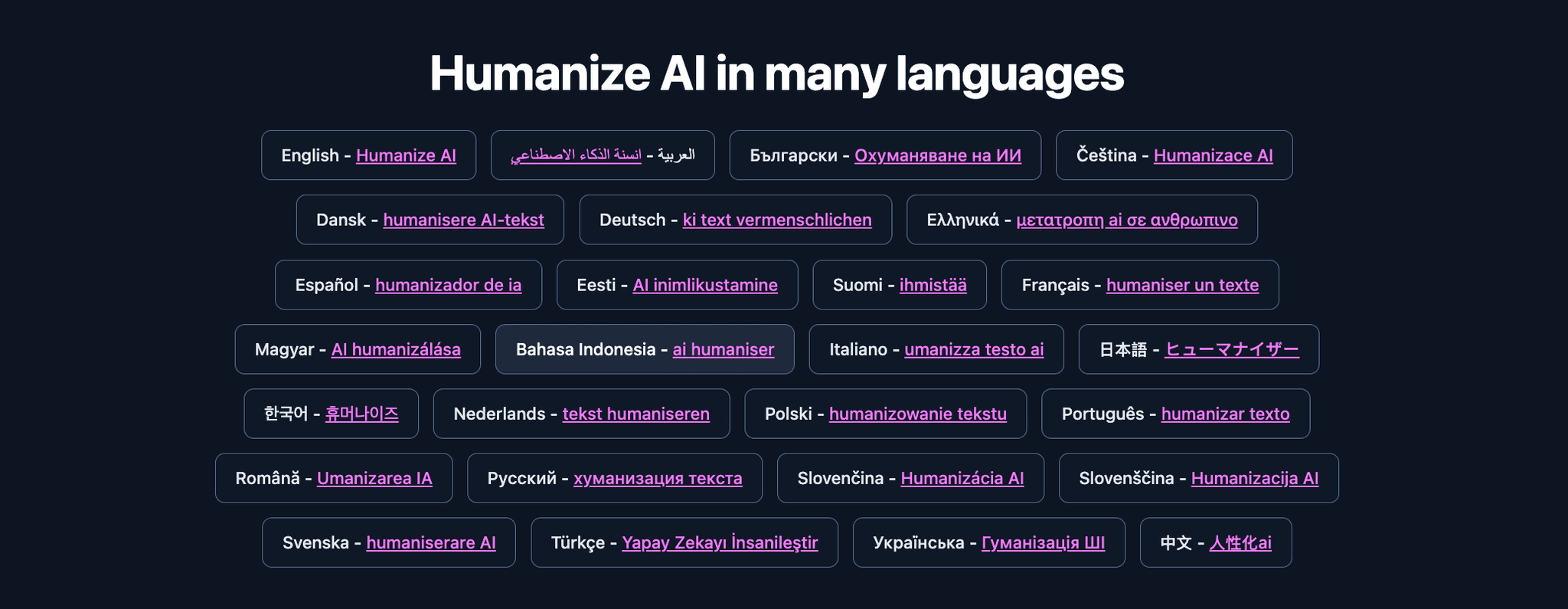
Pricing
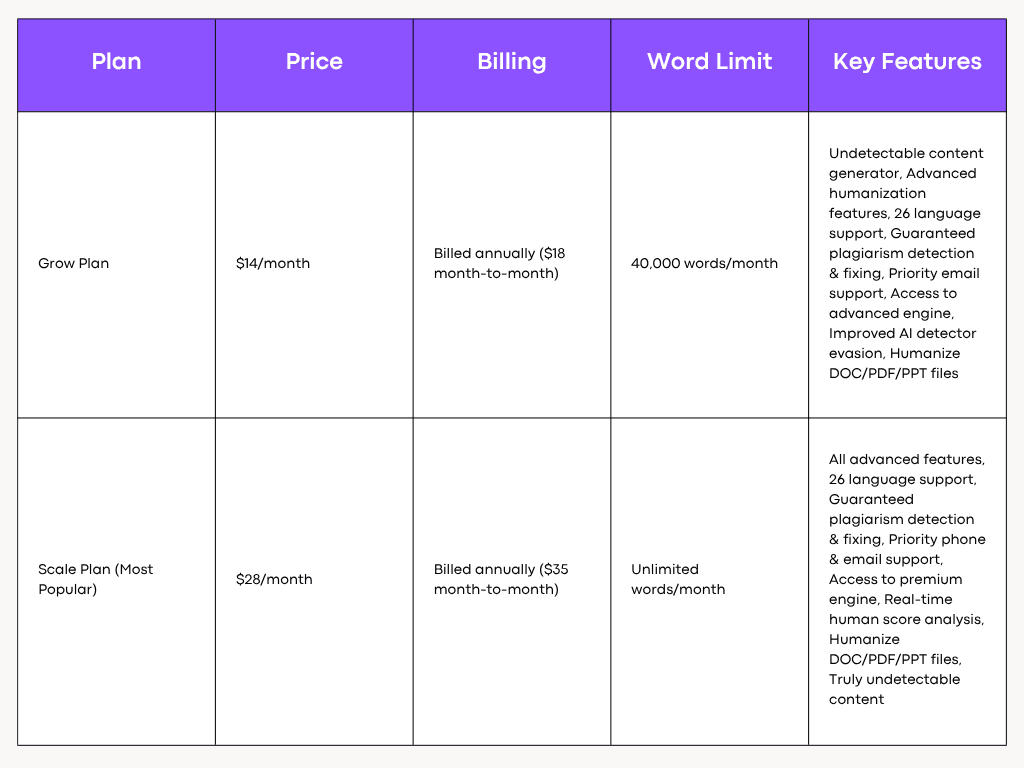

AISEO Humanizer — The Best All-Around GPTInf Alternative for Natural, High-Quality Writing
If you’re searching for a versatile and powerful GPTInf alternative, AISEO Humanizer is one of the strongest options available. While GPTInf mostly relies on surface-level paraphrasing, AISEO goes deeper by reshaping sentence flow, tone, and rhythm to produce text that reads more naturally. It’s built for users who want polished, consistent writing that still sounds like a human wrote it — without sacrificing clarity or intent.

Features that Make AISEO a Strong GPTInf Alternative?
1. Structural Rewriting That Goes Beyond Paraphrasing
AISEO’s humanizer isn’t limited to swapping words. It rebuilds your sentences with more natural pacing, better transitions, and smoother flow. This helps eliminate the repetitive, mechanical feel that GPTInf sometimes leaves behind, making your writing sound more confident and refined.

2. History Panel for Consistent, Human-Like Voice
One of AISEO’s standout features is its History Panel, which lets you see every version of your content as you refine it. Instead of regenerating random variations like basic tools, AISEO helps you maintain a consistent voice throughout your entire document — something GPTInf users often struggle with.

3. Built-In Fact Check for More Credible Writing
While GPTInf can sometimes produce overly generic or vague responses, AISEO’s Fact Check feature helps anchor your content with accurate details. When you’re writing essays, blogs, or research-based content, this tool ensures your text feels grounded, credible, and naturally informed.

4. Purpose & Readability Controls for Custom Tone Matching
AISEO gives you the freedom to shape your writing style based on your goal. Whether you need academic precision, storytelling creativity, conversational tone, or professional clarity, the tool adapts your structure and vocabulary accordingly. Readability controls let you fine-tune complexity so your text matches exactly how you want it to sound.

5. Natural Formatting With File Uploads
AISEO can rewrite full PDFs, Word documents, essays, and long-form content without breaking your formatting. Headers, spacing, tables, and citations remain intact — an advantage over GPTInf, which often struggles with clean document handling.

AISEO Pricing


HIX Bypass — The Fastest, Real-Time GPTInf Alternative for Humanlike Text
If you want a quick, intuitive, and highly effective GPTInf alternative, HIX Bypass is one of the strongest tools available. It focuses on real-time rewriting that softens rigid AI phrasing, adds natural rhythm, and reshapes your content into something that reads effortlessly human. While GPTInf often feels mechanical or overly paraphrased, HIX produces smooth, humanlike writing in seconds — perfect for students, creators, and professionals who want natural quality without extra editing.
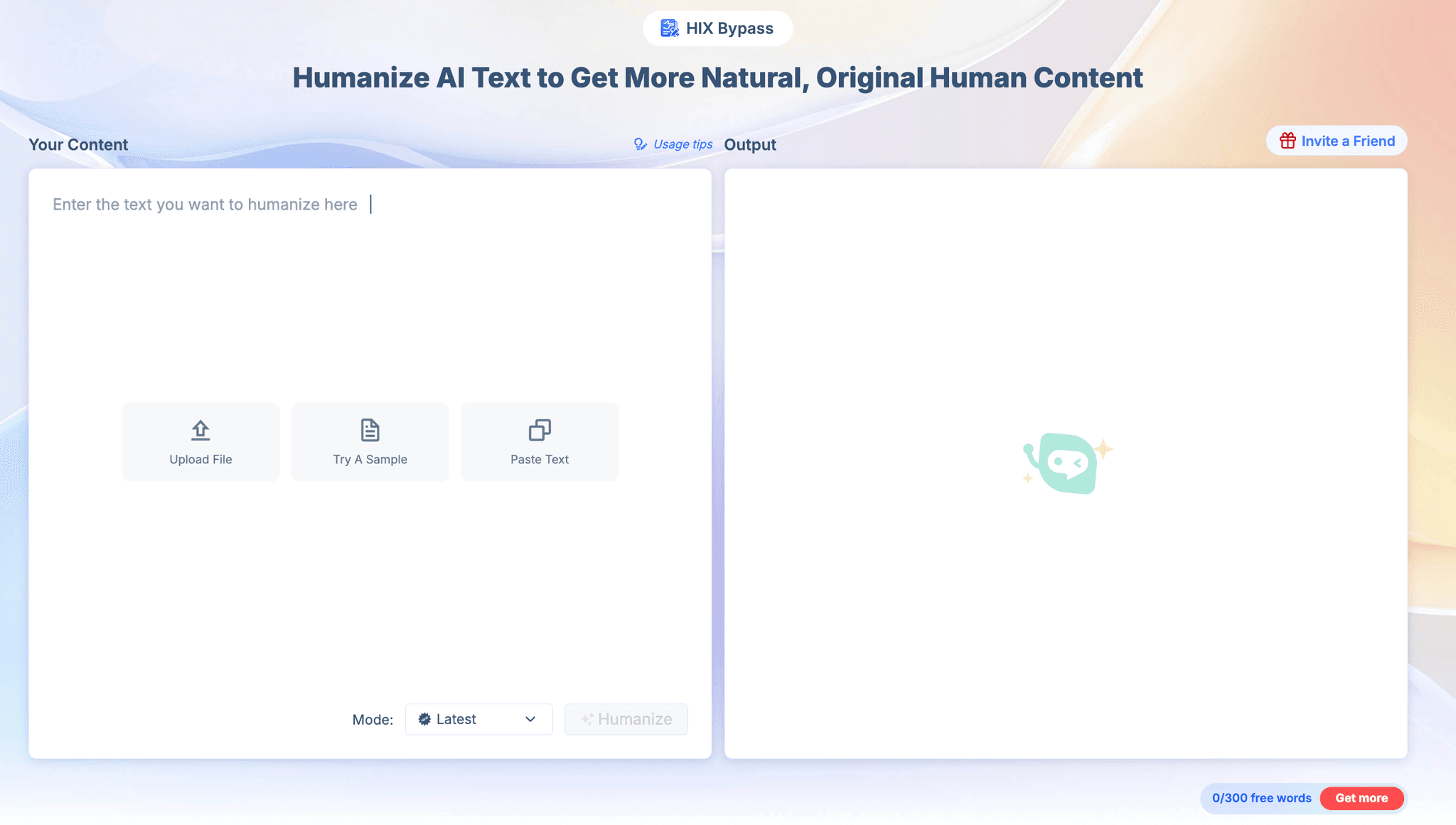
What Makes HIX Bypass a Better GPTInf Alternative?
1. Smarter Sentence Reshaping, Not Just Paraphrasing
HIX adjusts flow, pacing, and transitions at a deeper structural level. Instead of swapping words like GPTInf, it reworks entire patterns so your content sounds clean, expressive, and naturally written.

2. Emotional Nuance for a More Human Voice
AI text often feels flat. HIX adds subtle emphasis, warmth, and emotional variation to make your writing feel personal. The result is smoother, friendlier text that feels more authentic than GPTInf outputs.
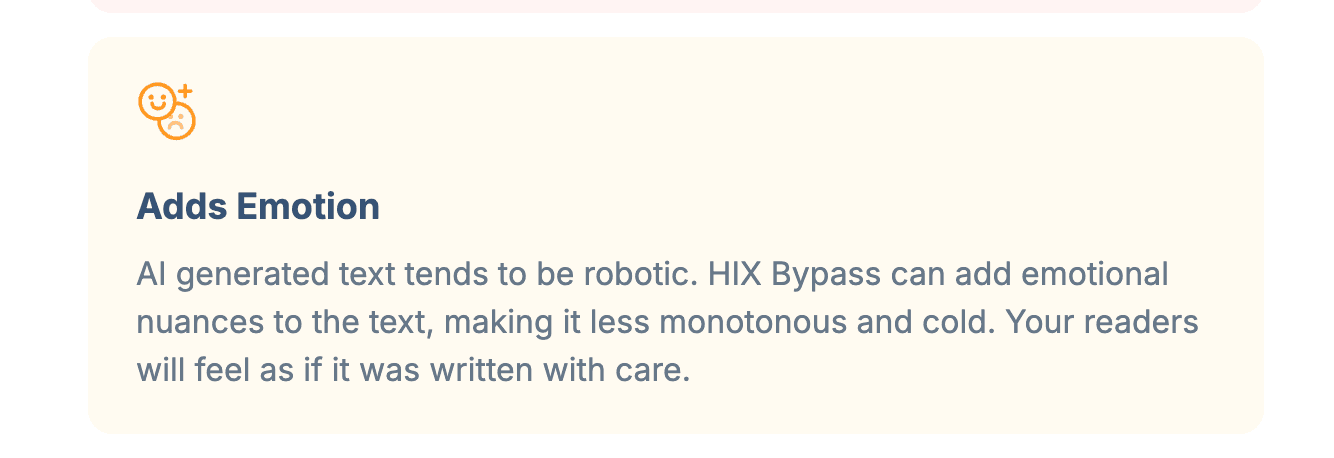
3. Meaning-Preserving Rewrites (No Loss of Context)
One of the biggest drawbacks of GPTInf is that it occasionally alters meaning. HIX avoids this by understanding the intention behind your text and rebuilding sentences without changing your message. Perfect for academic work, emails, blogs, and professional writing.
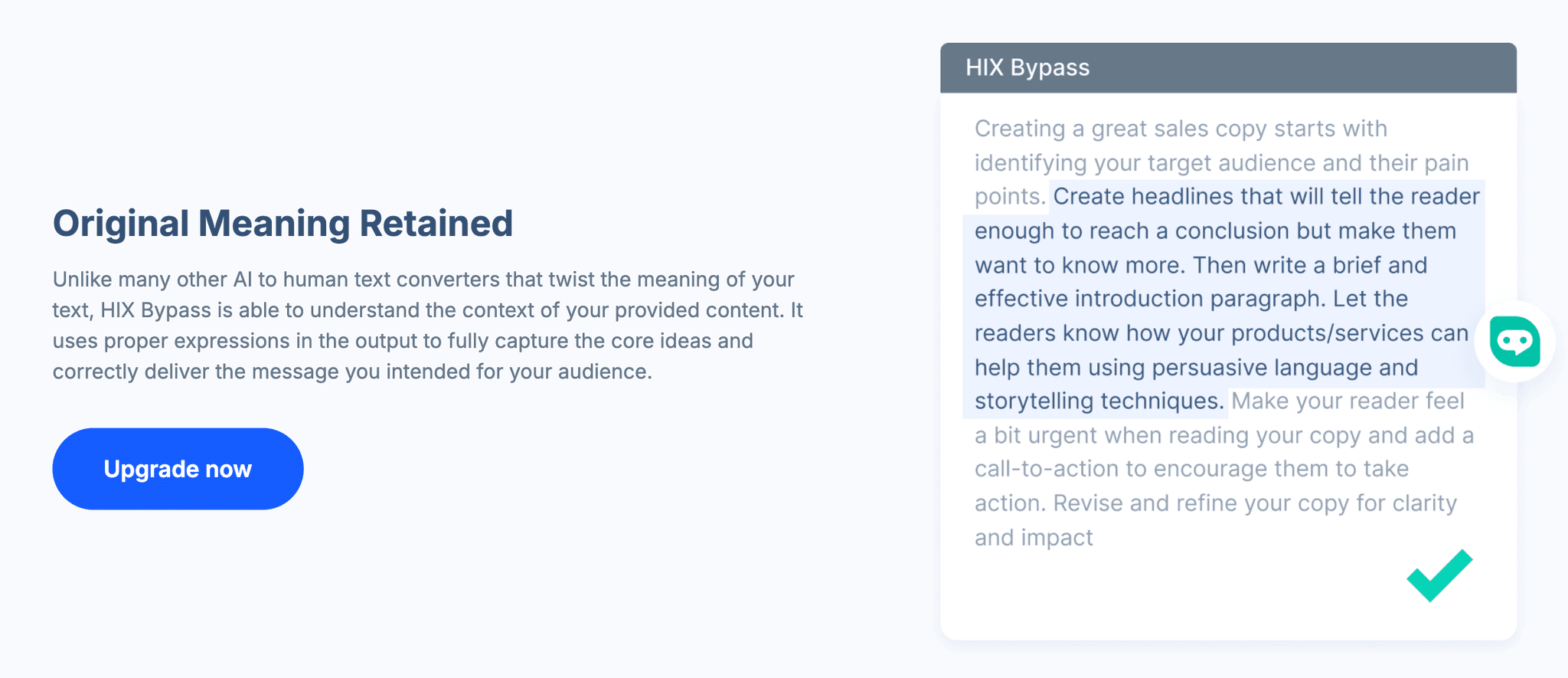
4. Naturally Original Sentence Structures
HIX creates unique phrasing that feels fresh without drifting off-topic. This helps avoid repetitive patterns that GPTInf sometimes introduces and gives your writing a more natural human texture.
Pricing

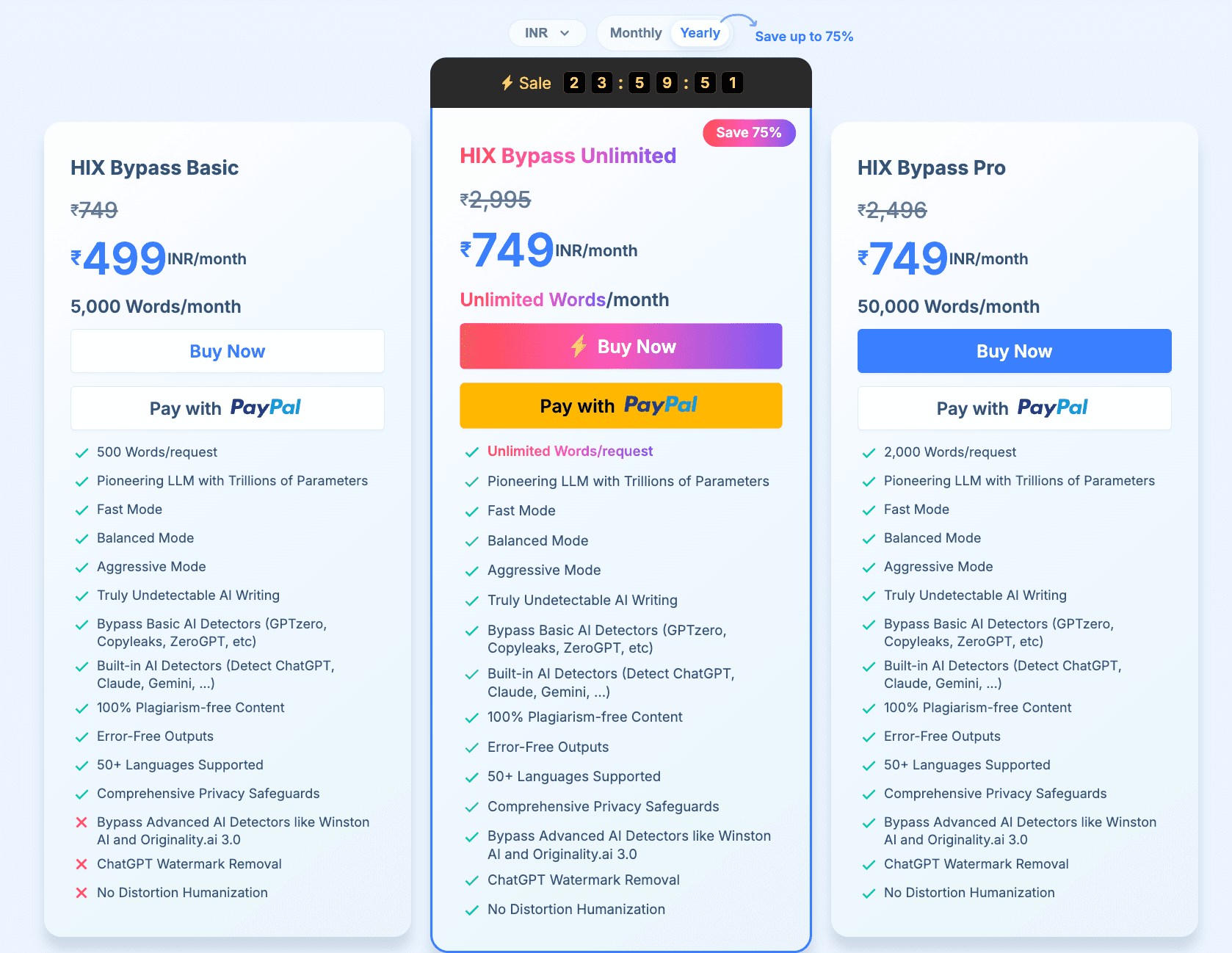
QuillBot — The Classic GPTInf Alternative With Smoother Human Tone Options
If you want a familiar, reliable, and easy-to-use GPTInf alternative, QuillBot is one of the most dependable choices. It has been around longer than most rewriting tools, and its strength lies in softening rigid AI-generated sentences while keeping your meaning intact. GPTInf often produces repetitive or overly paraphrased results, but QuillBot gives your writing a more natural rhythm, smoother transitions, and a tone that feels intentionally human.

Why QuillBot Works Well as a GPTInf Alternative
1. Basic + Advanced Modes for Smoother Rewrites
QuillBot’s rewriting modes help reshape AI-generated text without going overboard. The Standard mode softens stiffness, while the Fluency and Advanced modes restructure sentences more deeply to remove that mechanical feel GPTInf sometimes leaves behind.

2. Tone Control, Keyword Protection, and Vocabulary Variation
Whether you want your writing to sound more formal, casual, or expressive, QuillBot gives you simple tone adjustments. The Freeze Words feature helps you lock specific terms in place — something GPTInf doesn’t handle well — making it ideal for SEO, branded content, and technical writing where terms must stay consistent.

3. Flow Improvement Tools for Cleaner Readability
QuillBot analyzes your sentence rhythm and pacing to improve transitions and smooth out awkward chunks. GPTInf often rewrites text line by line, but QuillBot helps unify the entire paragraph so it reads like a coherent human-written piece.

4. Document Uploads With Layout Preservation
QuillBot can rewrite full documents while keeping your formatting intact. Headers, bullet points, list structures, tables, and citations stay exactly where they belong — something GPTInf can sometimes distort.

5. Multilingual Rewriting With Native-Like Tone
QuillBot supports multiple languages including English, Spanish, French, German, and Portuguese. Each rewrite reflects the natural tone and structure of the target language, making it a flexible GPTInf alternative for bilingual or international users.

QuillBot Pricing


Ryne AI — The Academic-Grade GPTInf Alternative
If you need a GPTInf alternative that excels specifically in academic, research, and high-integrity writing, Ryne AI is one of the strongest options in 2025. Unlike GPTInf — which often produces paraphrased but shallow rewrites — Ryne AI rebuilds text using deeper semantic variation, subtle tone shifts, and natural pacing designed to resemble real human revision. It’s ideal for users who need clean, accurate, and academically acceptable writing that still feels natural.
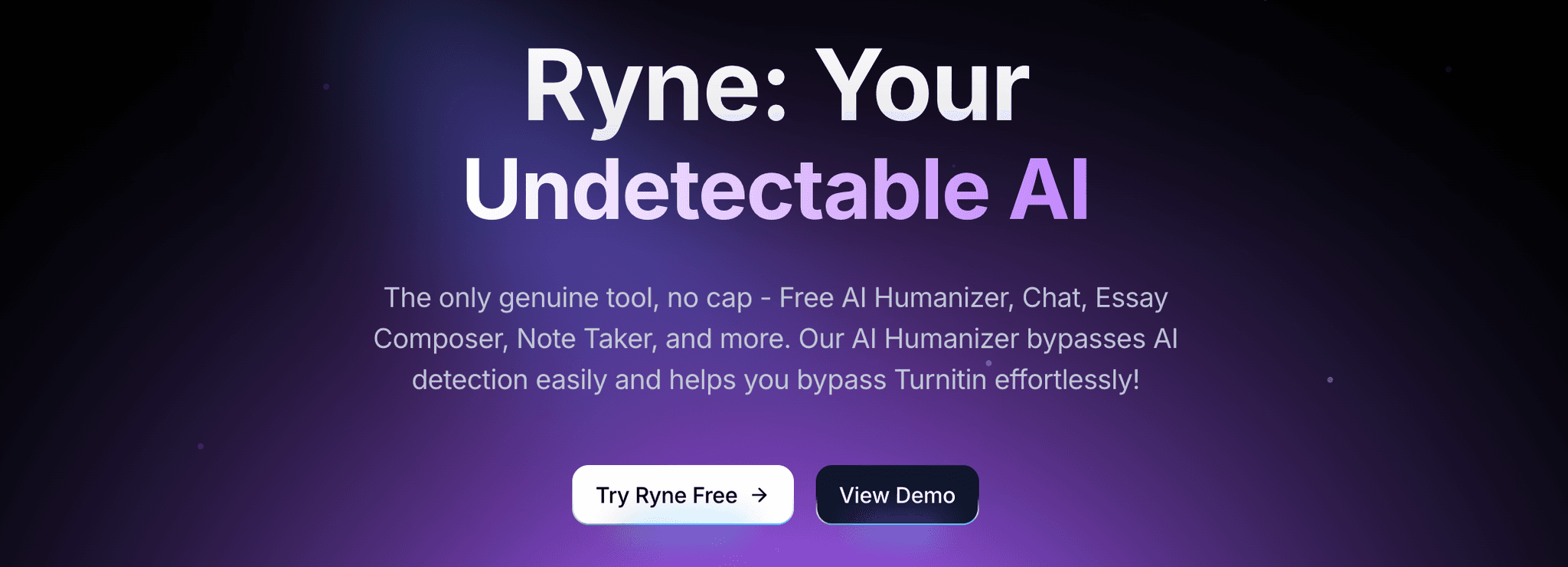
Why Ryne AI Outperforms GPTInf for Academic & Professional Work
1. Deep Semantic Humanization (Not Just Rewording)
Ryne AI reconstructs your sentences at the conceptual level. Instead of swapping phrases like GPTInf, it changes the way ideas are expressed — adding natural variation, improved clarity, and a humanlike narrative tone. This makes the final text feel genuinely rewritten, not mechanically altered.
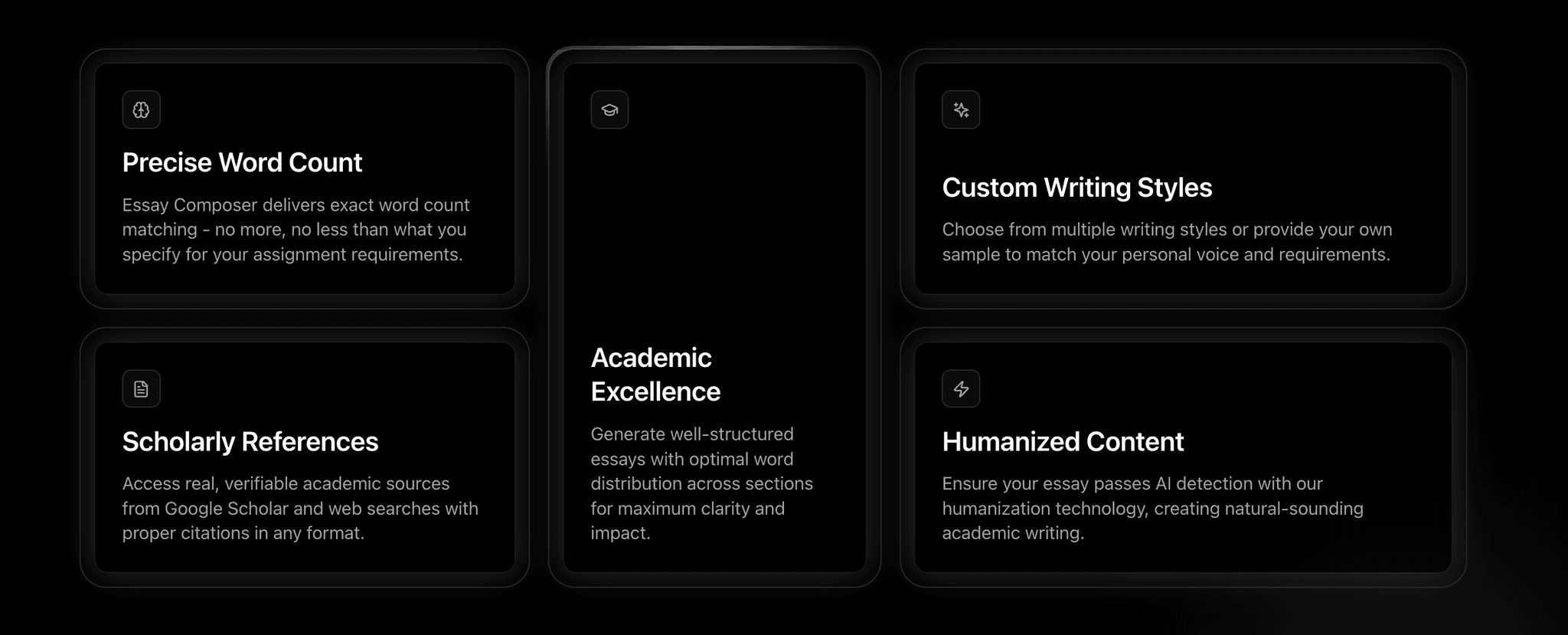
2. Multi-Model Rewrite Engine for True Variation
GPTInf relies on a single rewrite style. Ryne AI blends outputs from 15+ AI models (GPT, Claude, Gemini, etc.) to produce richer variation and more unpredictable sentence flow. This results in text that behaves like it was revised by a human editor rather than generated by software.
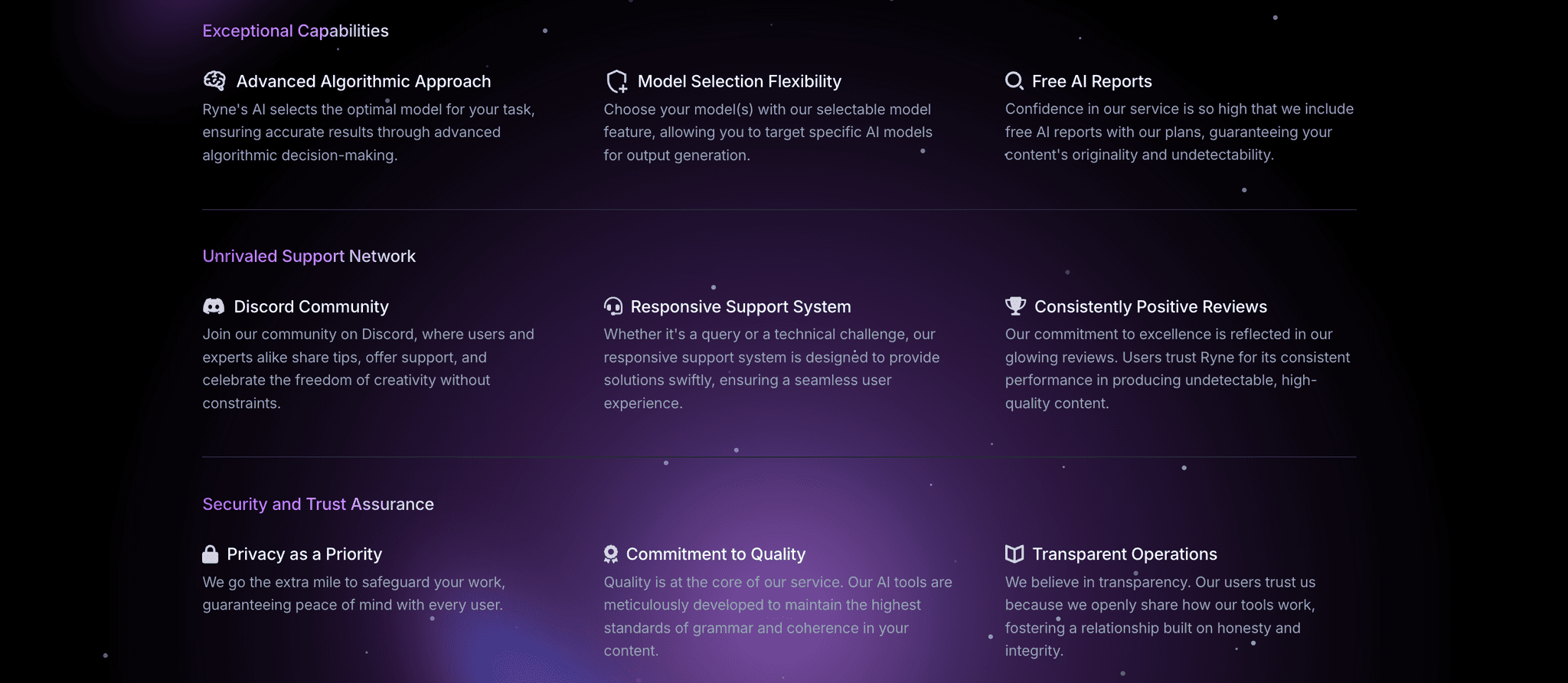
3. Structure-Safe Rewriting for Essays & Research Papers
Academic writing requires keeping arguments, citations, and logical flow intact. Ryne AI excels here — it preserves your structure while refining tone, readability, and phrasing. GPTInf can struggle with precision; Ryne ensures the meaning stays accurate.

Ryne AI Pricing


Conclusion
Finding the right GPTInf alternative comes down to one thing: choosing a tool that doesn’t just paraphrase your text, but truly elevates it. GPTInf had its moment, but it struggles with depth, nuance, and structural humanization — which is exactly why modern tools have taken over. Humanize AI Text leads the pack with the most advanced, natural rewriting engine, making it the top choice for anyone who needs authentic, undetectable, human-sounding writing. AISEO follows closely with its tone-adaptive rewriting and brand-safe output, while HIX Bypass, QuillBot, and Ryne AI offer strong options depending on your workflow, content type, and precision needs.
At the end of the day, your goal isn’t to “hide AI” — it’s to produce writing that feels real, flows naturally, and represents your voice. These tools help you do exactly that. Pick the one that fits your needs, and write with confidence again.
Frequently Asked Questions About GPTInf Alternatives
1. What does “GPTInf alternative” actually mean?
A “GPTInf alternative” refers to any AI humanizer or rewriting tool that performs the same job as GPTInf — but with better accuracy, coherence, and reliability. GPTInf was originally designed to make AI-generated text sound more human, but many users find it limited in depth, tone flexibility, and structural rewriting.
A true alternative doesn’t just paraphrase your words. It rebuilds patterns, pacing, and tone so the writing feels genuinely human. These alternatives include advanced tools like Humanize AI Text, AISEO, HIX Bypass, QuillBot, and Ryne AI — each offering modern approaches that surpass GPTInf in quality, speed, and authenticity.
2. Why do people look for a GPTInf alternative?
Most users switch from GPTInf because:
- The rewriting often feels repetitive or too similar to the input.
- It can distort meaning or oversimplify ideas.
- It lacks flexible modes for academic, professional, or creative writing.
- Its humanization is shallow compared to newer tools.
- It doesn’t consistently produce natural rhythm or tone. Essentially, GPTInf works for basic paraphrasing, but alternatives provide deeper rewriting, better control, and more natural-sounding results. These tools feel closer to human editing rather than simple rewording.
3. Which GPTInf alternative is the most accurate in 2025?
Humanize AI Text is widely considered the most accurate modern alternative. It rewrites text at the structural level rather than swapping synonyms. That means it changes sentence rhythm, pacing, flow, and emotional tone — the things that make writing genuinely human. It also includes features like:
- Human Score
- Brand voice
- Readability control
- Purpose modes
- Keyword freezing These options give you far more control than GPTInf and produce more natural, polished writing.
4. What is the best GPTInf alternative for academic writing?
If you're working on essays, reports, research papers, or formal assignments, Ryne AI is the strongest choice. It excels at:
- preserving meaning
- maintaining academic structure
- rewriting complex ideas with clarity
- avoiding distortion While GPTInf can accidentally change facts or tone, Ryne AI keeps everything intact while making the writing feel more natural. It’s ideal for students and researchers who need precision.
5. What is the best GPTInf alternative for SEO, blogging, and marketing?
AISEO stands out for content creators. It is designed for:
- brand tone
- readability improvements
- SEO-friendly variation
- keyword protection Bloggers, marketers, and website owners prefer AISEO because it makes AI text sound like a polished, editorial-quality article — something GPTInf struggles with. Its History panel and Human Score also make it easier to refine long-form content.
6. What is the easiest GPTInf alternative for beginners?
QuillBot is the simplest, most beginner-friendly replacement. Its interface is clean, its rewriting modes are intuitive, and it doesn’t overwhelm you with settings. If you want a tool that instantly softens AI tone without a learning curve, QuillBot is an excellent fit. GPTInf users who want more stability and better flow often switch to QuillBot.
7. Which GPTInf alternative works best for real-time, fast rewriting?
HIX Bypass is the fastest solution. It rewrites text in seconds and is designed for people who want quick, natural rewriting without losing meaning. It’s great for email writers, social media creators, and students who want smoother sentences without major structural changes.
8. Does a GPTInf alternative change the meaning of my writing?
The best GPTInf alternatives — Humanize AI Text, AISEO, and Ryne AI — are specifically designed to preserve your meaning. This is a major improvement over GPTInf, which sometimes:
- breaks context
- changes sentence intent
- simplifies too aggressively Instead, these modern tools read your content first, then rebuild it in cleaner, more human language without shifting the core message.
9. Are GPTInf alternatives better at making text sound human?
Absolutely. GPTInf was one of the earlier tools in AI humanization, but its techniques are now outdated. Modern alternatives use:
- sentence rhythm adjustments
- humanlike pacing
- complexity variation
- micro-emotional tone shifts
- structural rewriting These are the same things human editors naturally do, which is why newer tools produce writing that feels more organic and believable.
10. Can GPTInf alternatives be used for professional writing?
Yes — in fact, many alternatives are specifically optimized for professional use. Tools like Humanize AI Text and AISEO are ideal for:
- business emails
- reports
- proposals
- product descriptions
- marketing copy They help you maintain professionalism while removing robotic phrasing, something GPTInf often struggles with. The output is clean, approachable, and client-ready.
11. Are GPTInf alternatives safe to use?
Yes, reputable tools are safe. Most modern GPTInf alternatives:
- do not store your content
- do not share your writing
- use encrypted processing Many creators choose Humanize AI Text or AISEO specifically because they handle content confidentially, which is especially important for academic and business users.
12. Do GPTInf alternatives support multiple languages?
Yes. HIX Bypass, QuillBot, and Humanize AI Text support dozens of languages including:
- English
- Spanish
- French
- German
- Italian
- Portuguese
- Korean
- Japanese GPTInf has limited multilingual refinement, so users who want native-sounding tone in different languages often switch to these alternatives.
13. Do GPTInf alternatives handle long-form content better?
Yes — significantly better. GPTInf can struggle with paragraphs longer than a few sentences. Modern tools, especially AISEO and Humanize AI Text, maintain:
- structure
- context
- readability
- transitions They are built for blogs, essays, articles, and full documents up to thousands of words.
14. Which GPTInf alternative is the most affordable?
QuillBot Premium is the most affordable long-term option at around $4.17/month (annual). HIX Bypass also offers a low-cost Basic plan. Humanize AI Text and AISEO provide more advanced rewriting but are still reasonably priced for their capabilities.
15. Do GPTInf alternatives remove repetitive or robotic tone?
Yes. Tools like Humanize AI Text and HIX Bypass specifically target:
- repetition
- monotone pacing
- overly balanced sentences
- weak emotional tone GPTInf can smooth sentences, but it doesn’t fix deeper structural issues. The alternatives rebuild the text so it sounds more dynamic.
16. Can I use GPTInf alternatives on full documents (PDFs, DOCX)?
Yes, especially with Humanize AI Text and QuillBot. You can upload entire documents and receive clean rewrites with the formatting preserved — headers, spacing, bullets, citations, everything. GPTInf cannot reliably maintain professional layouts.
17. Which GPTInf alternative is best for rewriting AI-generated content without detection?
While this blog avoids detector-focused claims, objectively speaking, Humanize AI Text, AISEO, HIX Bypass, and Ryne AI all provide deeper structural rewrites that make AI text sound more convincingly human than GPTInf does.
18. Which GPTInf alternative is best overall?
It depends on your workflow:
- Best overall: Humanize AI Text
- Best for SEO & content writers: AISEO
- Best for fast rewriting: HIX Bypass
- Best for academic writing: Ryne AI
- Best for beginners & affordability: QuillBot
Across all categories, Humanize AI Text remains the top GPTInf alternative in 2025 thanks to its accuracy, natural tone, and structural humanization capabilities.

About Dilyar Buzan
Founder & CEO at AISEO
Artificial Intelligence - University of Amsterdam
LLM engineer
